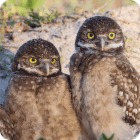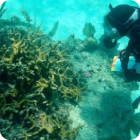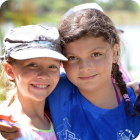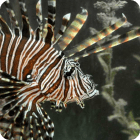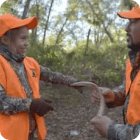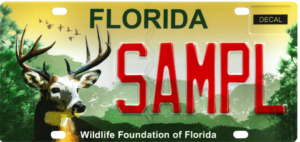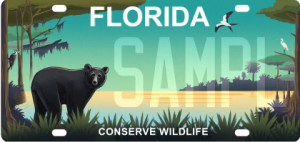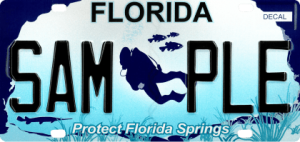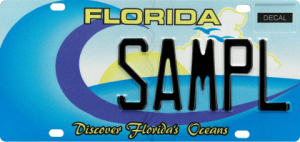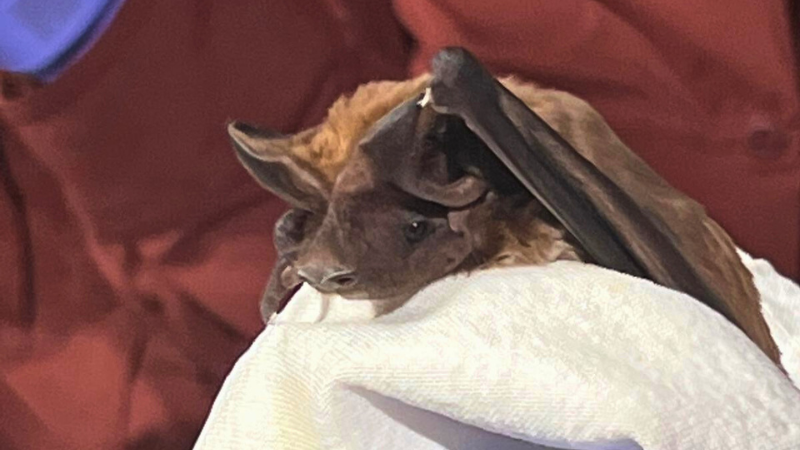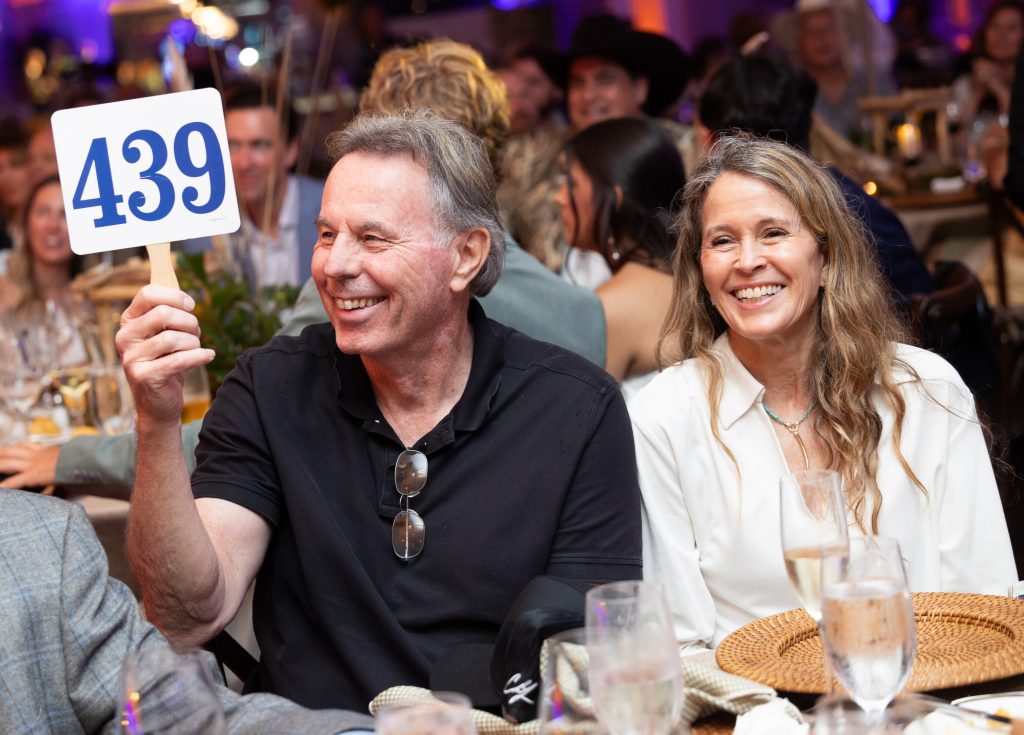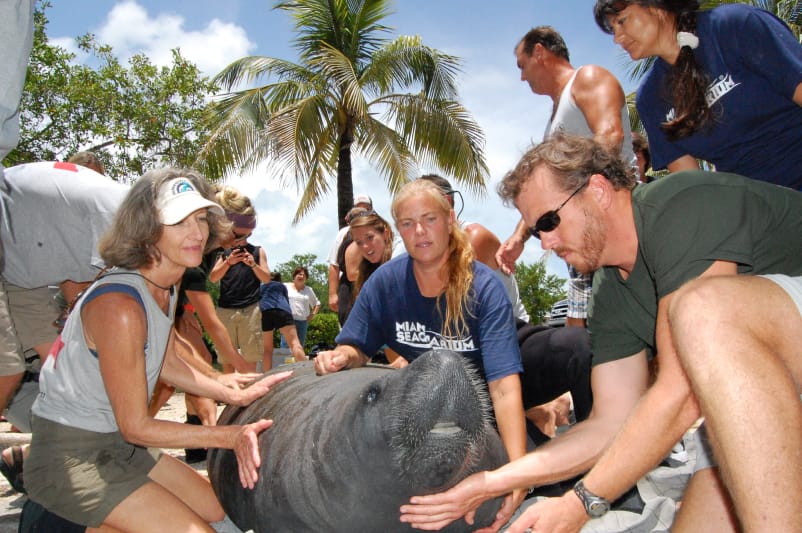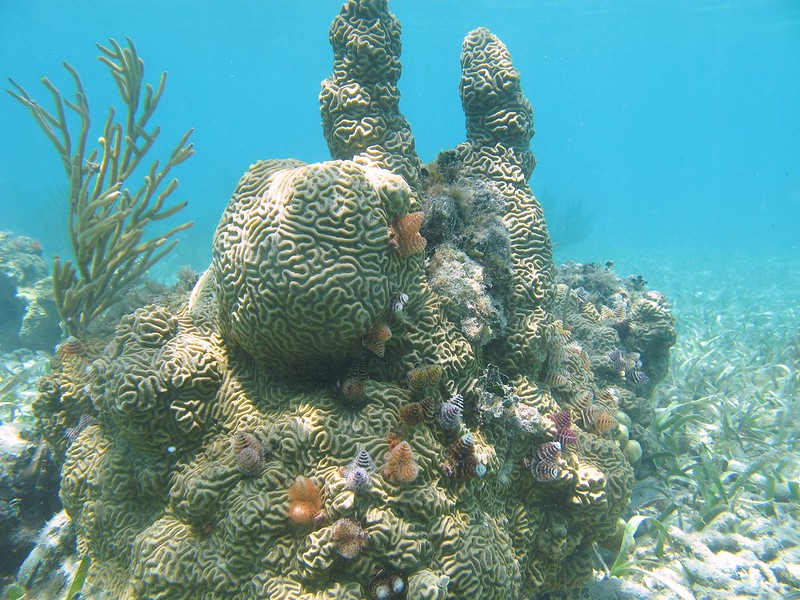
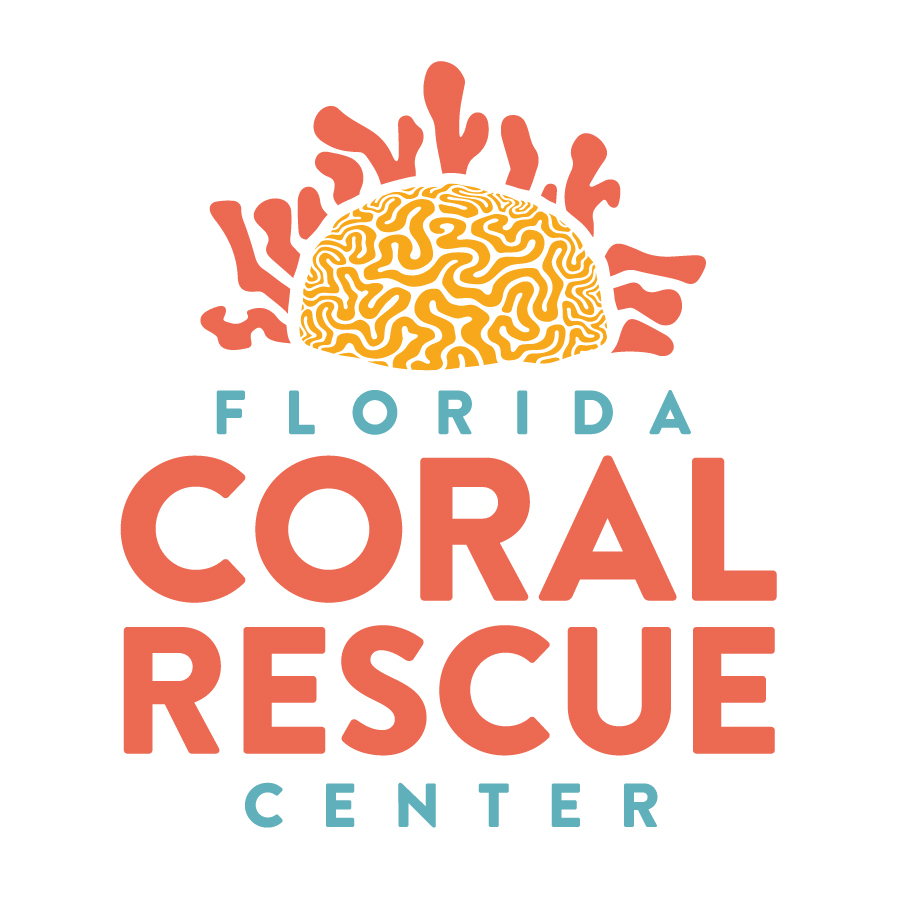 Orlando, FL (April 14, 2021) – A diverse group of coral reef management and conservation leaders has banded together to respond to an environmental crisis and save Florida’s coral reefs. The Orlando-based Florida Coral Rescue Center (FCRC) is a state-of-the-art facility established for gene banking and care of Florida corals rescued from reefs not yet affected by the stony coral tissue loss disease (SCTLD) sweeping across the Florida Reef Tract (Florida’s Coral Reef). As part of a national network of coral holding or gene banking facilities coordinated by the Association of Zoos and Aquariums (AZA), it is the largest facility of its kind in the U.S. and provides a safe, stable environment for coral colonies to receive world-class care from a team of coral experts. It will play a significant role in the future of Florida’s Coral Reef.
Orlando, FL (April 14, 2021) – A diverse group of coral reef management and conservation leaders has banded together to respond to an environmental crisis and save Florida’s coral reefs. The Orlando-based Florida Coral Rescue Center (FCRC) is a state-of-the-art facility established for gene banking and care of Florida corals rescued from reefs not yet affected by the stony coral tissue loss disease (SCTLD) sweeping across the Florida Reef Tract (Florida’s Coral Reef). As part of a national network of coral holding or gene banking facilities coordinated by the Association of Zoos and Aquariums (AZA), it is the largest facility of its kind in the U.S. and provides a safe, stable environment for coral colonies to receive world-class care from a team of coral experts. It will play a significant role in the future of Florida’s Coral Reef.
An unprecedented collaboration has emerged to create and support the center. Under the guidance of the Association of Zoos & Aquariums (AZA), the group consists of resource management agencies like Florida Fish and Wildlife Conservation Commission (FWC) and NOAA Fisheries, zoological facilities like SeaWorld and funding organizations like the Disney Conservation Fund, Fish & Wildlife Foundation of Florida, Bass Pro Shops, Cabela’s Outdoor Fund, World Wide Corals, Inc. and the Edith and Curtis Munson Foundation. These partners provide the funding, resources, and expertise to help ensure there is a future for Florida corals.
“AZA is proud of the incredible collaboration between our accredited zoo and aquarium members, like Disney and SeaWorld, their financial commitment, and their investment of time and talent to help save this natural treasure,” said Dan Ashe, President and CEO of AZA. “Being able to share our global network of animal care and welfare experts and our coral management expertise is inspiring. A monumental undertaking like this is another demonstration of why zoos and aquariums are so vital to conservation. The coordinated, multi-facility AZA-Florida Reef Tract Rescue Project and the Florida Coral Rescue Center show that, together, we can make a difference for Florida’s reefs for future generations to share.”
“This unified effort between public aquariums, government agencies, researchers and universities, is incredible,” reflects Jim Kinsler, SeaWorld aquarium curator and FCRC facility manager. “Experts from around the United States are collaborating together to save the corals on Florida’s Coral Reef to support their survival in the future. The Florida Coral Rescue Center is a product of these vital partnerships and we couldn’t do the work we’re doing without our combined resources and expertise.”
Corals Cannot Physically Distance
For the past year, the nation’s focus has been on the disruption, disconnection and challenges caused by COVID-19. The global COVID-19 pandemic response, including our physical distancing to curb the spread of the disease, is a stark reminder of how interconnected we are with each other.
Like the response to COVID-19, combatting new diseases is also a challenge in animal conservation. But unlike our approach to mitigating the spread of COVID-19 in humans, corals cannot physically distance. Rescuing corals from ahead of the SCTLD disease progression was an attempt to keep corals from getting sick and safeguard them for future reef restoration efforts.
Groundbreaking Coral Science Ensuring Optimum Care and Welfare
Often in an emergency, there is little time to explore how best to do something. Many of Florida’s coral species had never been managed in human care before and little was known about their needs. Decades of experience caring for Indo-Pacific and non-rescue Atlantic corals provided aquarists with a strong foundation.
Over the last year, FCRC coral aquarists have joined colleagues caring for rescued corals across the country, advancing coral science, developing new coral care techniques, and ensuring optimum coral welfare. In some cases, they are observing behaviors that researchers and field biologists have never observed before. Making every effort to meet the needs of each coral, aquarists go the extra mile every day, including feeding corals in the dark when they prefer eating with the lights out.
A Different Mating Game
Rescuing corals is only the first step. Ultimately, many corals will be needed for restoration efforts, requiring the rescued corals to reproduce and produce offspring. Since many of the rescue coral species have never been held in human care before, aquarists have had a lot to learn about feeding, correct lighting, and proper water flow. And apparently, they are doing a great job. The corals have begun to reproduce!
Corals can reproduce sexually and asexually. Sexual reproduction provides the most genetic diversity among offspring due to the mixing of egg and sperm genetic material from the parents. Sexually reproduced corals are unique individuals while offspring produced by asexual reproduction are identical to the parent. Over the last year, FCRC corals have taken a huge step forward on their own and have been reproducing asexually, producing “gemmae” offspring.
Gemmae are identical to their parent. While not the optimum candidate for restoration in larger numbers, these coral clones ensure the genetic contribution of their rescued parents will continue to be part of Florida’s Coral Reef. Reproduction is a positive sign that the corals in the care of the FCRC are getting all that they need to not just survive but thrive.
The Personal FCRC Experience
Bringing hope to Florida’s Coral Reef and the corals that build the reef tract takes a community. The story of rescuing corals and the Florida Coral Rescue Center is a personal one for everyone involved.
It Takes a Colony
“This is not something that one person, one team or one organization can do alone. Collaboration, working without silos, exchanging ideas and combining resources for the future of our reefs is what coral rescue and the FCRC is all about. Corals have been getting it right for millions of years. Working together- working as a colony, we can do great things.” – Beth Firchau – AZA, Florida Reef Tract Rescue Project Coordinator
Honored to Work for Corals
“The effort to reverse the collapse of an entire ecosystem isn’t something that can be done without the herculean efforts of many people with a diversity of talents and resources. I consider it a privilege to play even a small part in this huge effort.“ – Dr. Andy Stamper – Disney, Conservation Science Manager
A Model for Other Conservation Challenges
“The Foundation was thrilled to help get the ‘lights turned on’ at the FCRC (or off, as the corals prefer)! We are honored to be a part of a team that’s working to preserve a treasured Florida ecosystem for generations to come. And it takes all of us, from the coral biologists to the accountants paying the bills. We’re hopeful this partnership of state agencies, companies and nonprofit organizations can serve as a model to tackle other significant environmental challenges as they arise.” -Andrew Walker – Fish & Wildlife Foundation of Florida, President & CEO
Hope for the Future
“FCRC represents hope for the future of Florida’s Coral Reef. To be able to save thousands of corals from disease so that restoration practitioners can be provided with the necessary stock to produce and re-populate the reef tract with new generations of genetically diverse corals is every conservation manager’s dream. Florida owes a great debt to AZA, the FCRC, and all of the gene banking facilities nationwide for taking on this significant challenge and knocking it out of the park.” -Lisa Gregg – FWC, Florida Coral Rescue Team Co-Lead
Corals and their Place in Ocean Communities
“Most people see corals as the background for fish in a habitat. For me, I started in reef keeping as a hobby as a teenager because of my love for fish. As I immersed myself in the care of corals and learned of their biological needs, I soon felt very differently. As a professional aquarist working on this project, I have met people who feel the exact same way. We all see just how amazing and important these corals are. It is incredibly encouraging when working in such a crisis. I love being a part of a conservation project that is much bigger than myself. In this project the corals are individualized and important. Each colony we have is priceless and will serve as building blocks for Florida reefs.” -Erik Ostertag – SeaWorld, FCRC Aquarist
Collaborating for Coral Conservation
“Working at the Florida Coral Rescue Center has been an extremely rewarding experience because it has allowed me to contribute to something that is larger than myself. Collaborating with other aquarists from around the country to execute a common goal is an experience like no other. We all care a tremendous amount about our mission and are able to come together to share our experiences, listen, and learn from each other for the sole purpose of saving these animals and all of the life that the corals foster. The work that we are doing is unprecedented in terms of magnitude and novelty. At the Center, we are caring for hundreds of corals, representing 19 species, that have little to no history in human care. This project is a unique challenge and we’re having a profound impact on the future of Florida coral reefs.” – Aaron Gavin – SeaWorld, FCRC Aquarist
Thriving Corals: A Good Problem to Have
“One of the most rewarding parts about working on this project at the FCRC is being able to see the incredible amount of growth these corals have had in the last 10 months that they have been here. When collected, each coral is mounted on a terracotta tile that serves as a stable base or anchor for the coral in the aquarium. The corals brought here in March 2020 are doing so well they need to be given larger tile bases. To see the Endangered Species Act list corals like the star corals is wonderful.” -Sara Urbanski – SeaWorld, FCRC Aquarist
An Unexpected Bundle of Joy
“Having the cactus corals (Mycetophyllia sp.) produce larvae was exciting. Their survival in the ocean is naturally challenging and, now with SCTLD, they have it even tougher. Caring for them and getting to watch them grow has shown me exactly how tough these little guys are.” -Jelani Reynolds – SeaWorld, FCRC Aquarist
About the Association of Zoos and Aquariums
Founded in 1924, the Association of Zoos and Aquariums is a nonprofit organization dedicated to the advancement of zoos and aquariums in the areas of conservation, animal welfare, education, science, and recreation. AZA is the accrediting body for the top zoos and aquariums in the United States and 11 other countries. Look for the AZA accreditation logo whenever you visit a zoo or aquarium as your assurance that you are supporting a facility dedicated to providing excellent care for animals, a great experience for you, and a better future for all living things. The AZA is a leader in saving species and your link to helping animals all over the world. To learn more, visit aza.org.
About Disney Conservation
Disney Conservation is committed to saving wildlife and building a global community inspired to protect the magic of nature together. Since 1995, the Disney Conservation Fund has directed $100 million to support nonprofit organizations working with communities to save wildlife, inspire action and protect the planet. Disney Conservation Team Wildlife leads best-in-class scientific programs to conserve wildlife in Disney’s backyard and beyond, connects people to build a network for nature, and cares for the planet through everyday actions. To learn more, visit disney.com/conservation or follow @DisneyConservation.
About the Fish & Wildlife Foundation of Florida
The Fish & Wildlife Foundation of Florida is a nonprofit organization dedicated to supporting the Florida Fish and Wildlife Conservation Commission (FWC) and other public and private partners to conserve Florida’s native animals and plants and the lands and waters they need to survive. Since its founding in 1994, the Foundation has raised and donated nearly $50 million to conservation and outdoor recreation and education.
About the Florida Fish and Wildlife Conservation Commission (FWC)
FWC’s mission is managing fish and wildlife resources for their long-term well-being and the benefit of people. To learn more, visit MyFWC.com.
About NOAA
NOAA’s mission is to understand and predict changes in the Earth’s environment, from the depths of the ocean to the surface of the sun, and to conserve and manage our coastal and marine resources. To learn more, visit noaa.gov
About SeaWorld Parks & Entertainment™
SeaWorld Parks & Entertainment™ is a leading theme park and entertainment company providing experiences that matter and inspiring guests to protect animals and the wild wonders of the world. SeaWorld is one of the world’s foremost zoological organizations and a global leader in animal husbandry, behavioral management, veterinary care and animal welfare. The company also rescues and rehabilitates marine and terrestrial animals that are ill, injured, orphaned or abandoned, with the goal of returning them to the wild. The SeaWorld® and Busch Gardens® rescue teams have helped more than 38,000 animals in need over the last 55 years.
